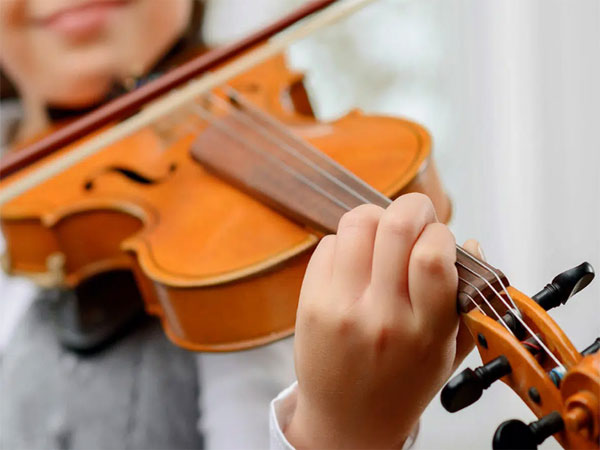The guitar is an amazing instrument that produces melodies according to the techniques employed. And generally, the player only has to take care of about 6 strings. With 6 strings, they have can play an entire song. However, the guitar and the number of strings it has continues to evolve to this day.
When it was created, the guitar had either 4 or 6 strings. Whereas, these days you can get a variety of combinations. Especially, when the demand for custom instruments has increased.
If you are planning to learn to play the guitar, you can enrol in music classes in Dubai.
How Many Strings are There in a Guitar?
In today’s time, a typical guitar features 6 strings and it is tuned to E, A, D, G, B, and E. There is no clear documentation of why people settled on E, A, D, G, B, and E. However, it is believed that this very arrangement was decided based on comfort, volume, and practicality.
There exist different types of strings that offer different types of sounds. If you are wondering how many strings are added to the traditional guitar to specialise it, keep reading.
How Many Strings are There in Acoustic Guitars?
A standard acoustic guitar features 6 strings. However, there can be some exceptions.
Various types of acoustic guitars according to the number of stings they have are listed below.
The 12-String Guitar
The 12 String guitars are the typical 6-string guitars. They have two necks or courses of strings tuned to the octave. This acoustic guitar looks super cool. It was popularised in the 60s and 70s by Roger McGuinn of the Byrds and Jimmy Page of Led Zeppelin.
You can hear them play it on songs like ‘Over the hill and far away’ and ‘More than a Feeling’.
The Harp Guitar
This type of guitar is an unusual contraption and can even be considered bizarre. It looks like a hybrid of a six-string guitar and a six-string harp. This instrument has a standard guitar body and a long curved section protruding from the upper part of it.
You can learn to play various types of guitars by enrolling in music classes in Dubai.
How Many Strings are There in Bass Guitars?
Often, the bass players take up the responsibility of holding the middle ground between a drummer and a guitarist. Most of the basses in the market feature 4 strings. However, there are some exceptions.
Given below is the list of different variations of four-string basses.
The 5-String Bass
A four-string bass is tuned to E, A, D, and G. This is the standard. However, the 5-string basses have a lower B note below the E. This makes them the perfect instrument for heavier genres in which it is common to drop tunes.
The 6-String Bass
The six-string basses keep the low B from the 5-string variant, however, they have a higher C note above the G. These basses are generally used in genres that have many tonsil variations or riffs or perform solos.
The 7-String Bass
This type of bass is an infrequent occurrence in the market. But, they do exist. These basses are generally tuned to B, E, A, D, G, C, F. One may think “Why would anyone require a 7-string guitar?” And they would be right to wonder so.
The answer to this question could be simple. Like most other concepts in this world, this bass was born out of curiosity. Because guitar manufacturers like to stretch their limits.
This bass sounds wild and energetic if one knows how to play it properly. You can take guitar lessons to learn to play it.
The 8-String Bass
The 8-string basses may sound intimidating, however, they are just 4-string bass that has two courses of strings. Instruments like 12-string guitars are tuned to octaves for producing a thicker tone and covering a more comprehensive frequency range.
Similarly, an eight-string bass is tuned to provide a more significant tone and frequency range overall.
The 9-String Bass
Needless to say, these basses can be counted in the absurd territory of guitars. Because the neck of the guitar only gets more complicated with each additional string. The craftsmanship must be great for it to handle the pressure of 9 strings.
However, with this arrangement, one can get access to some amazing highs and lows.
The 12-String bass
A 12-string bass is unusual as it is just a four-string bass that has three-course strings. Each note that is played produces a huge sound.
These are the different types of bass guitars based on the number of strings they have.
Solid Rock Music and Dance offer guitar lessons for beginners as well as advanced learners. Many people who have learned musical instruments from them recommend their services.


